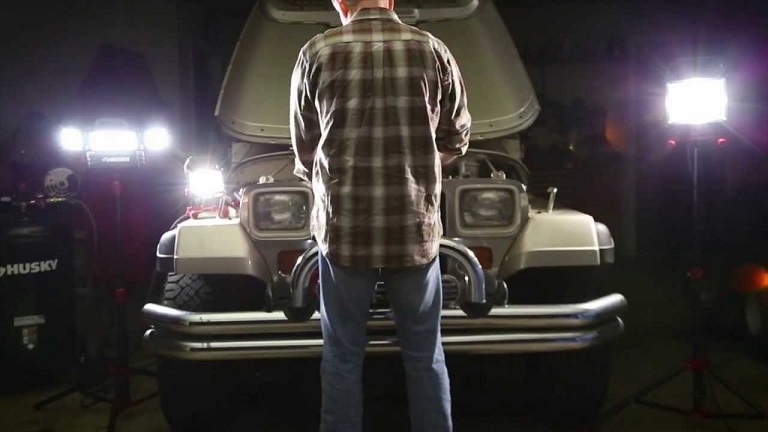Same as there are women who just can’t contain themselves when it comes to shopping (or as I call it clothing hunt), there are men, like me, who can’t resist increasing their DIY tool collection. Though I wouldn’t say I’m a pro at repairing and creating things, I enjoy the role of family handyman so I try to get the necessary tools that would make my work all the better and more efficient.

As soon as I realised I was turning my garage into a tool museum, I did everything I could to organise it neatly, using vertical space to my advantage as well, and clearing up the workspace of unnecessary items. However, speaking of efficiency, my garage was anything but efficient in terms of energy.
The reason for this is I mostly treated the garage as part of the outdoors, instead of an essential part of my home, and I believe this is the mistake many make, so here’s how I fixed it: I got on a quest for the best lighting sources that are suitable for a variety of tasks, and got to the ingenious Led work light. Since my work light is made of waterproof high pressure cast aluminium, and hard coated, scratch and high impact resistant lens, I make use of it outdoors as much as in the garage.
A Led work light such as this is created for durability, lasting up to 50.000 hours, which isn’t the case with halogens (13 times less durable), and incandescent (42 times less durable). LEDs don’t emit heat, they light up instantly, they are recyclable as they don’t contain toxic materials, in other words they are the eco-friendly, cost-efficient option perfect if you want to cut down on electricity costs and your carbon footprint. Investing in such quality lighting is worth all the money.
If your house is older, that means a considerable amount of energy is lost through your garage due to improper (or lack of) insulation. This was the reason it was difficult for me to properly heat up or cool my garage, which meant an increase in expenses. If you can’t afford to have a grand makeover and build walls with insulation, or change the windows, and doors, you can blow in R-value through in the ceiling and drywall through holes, along with adding adequate window treatment, like the insulating cellular shades.
Speaking of heating, if you don’t mind extra DIY projects and turning to more eco-friendly sources, instead of heating up your garage in the cold days with electric or gas heaters, you could use the inexhaustible sun energy by installing solar panels. These steps have helped me reduce my energy costs considerably, so get to your garage and start using energy more prudently.

